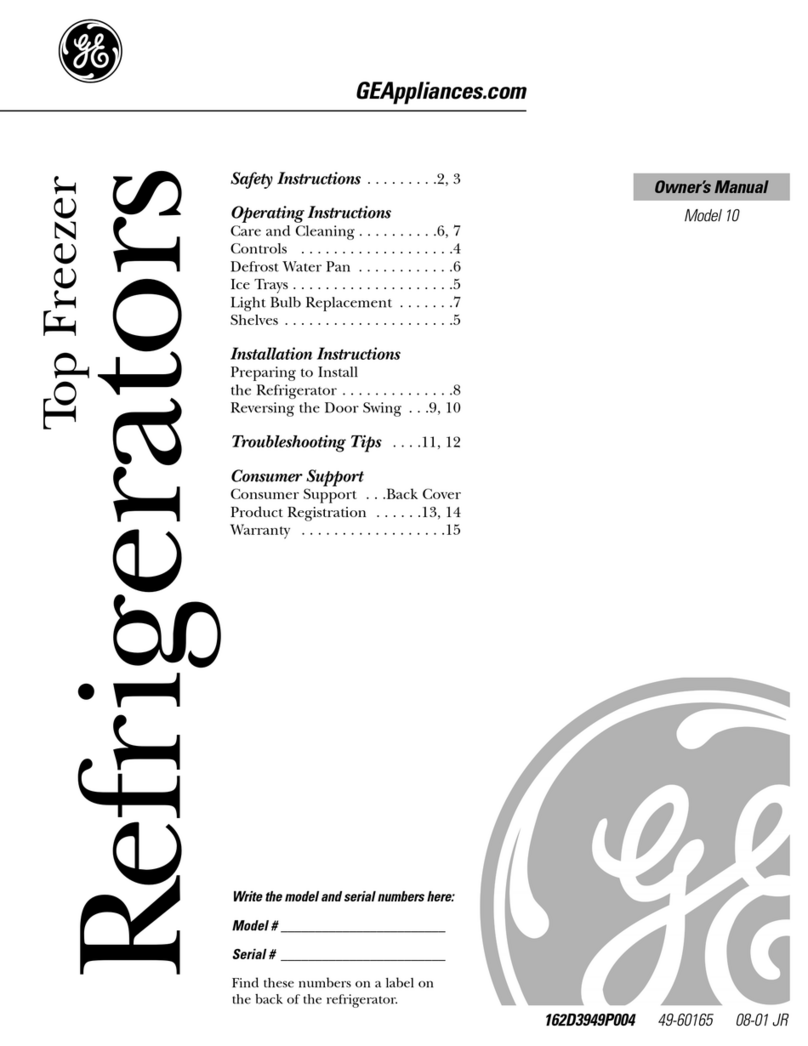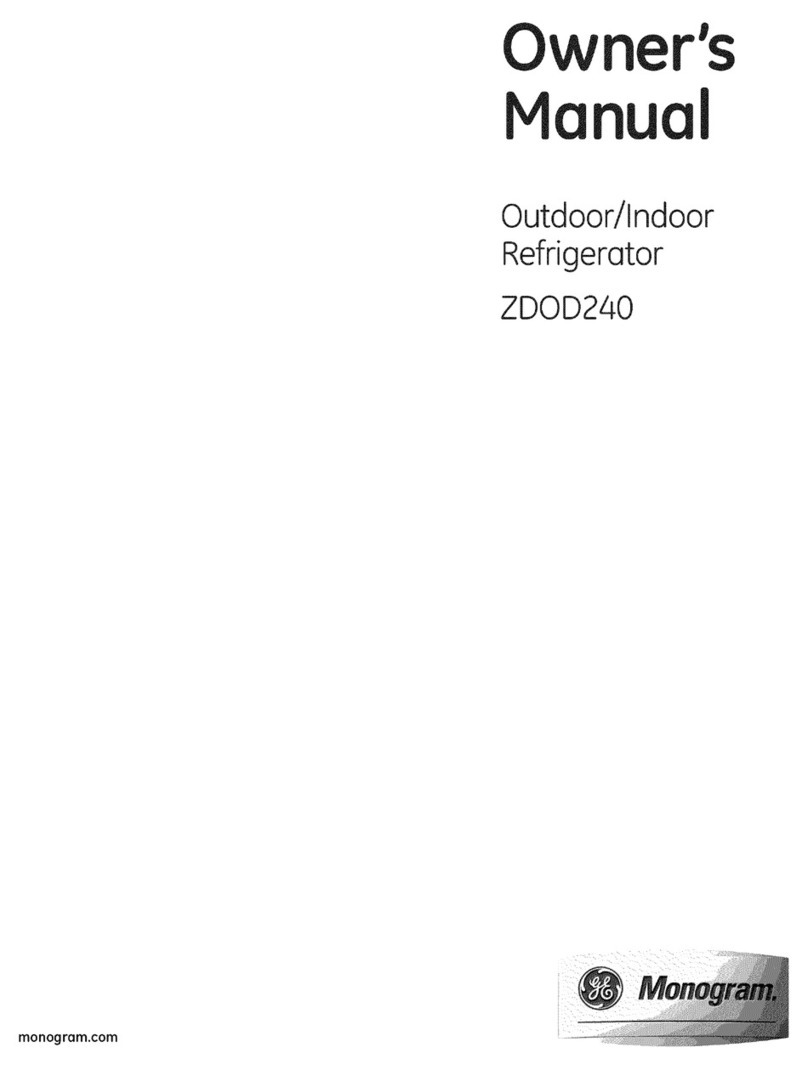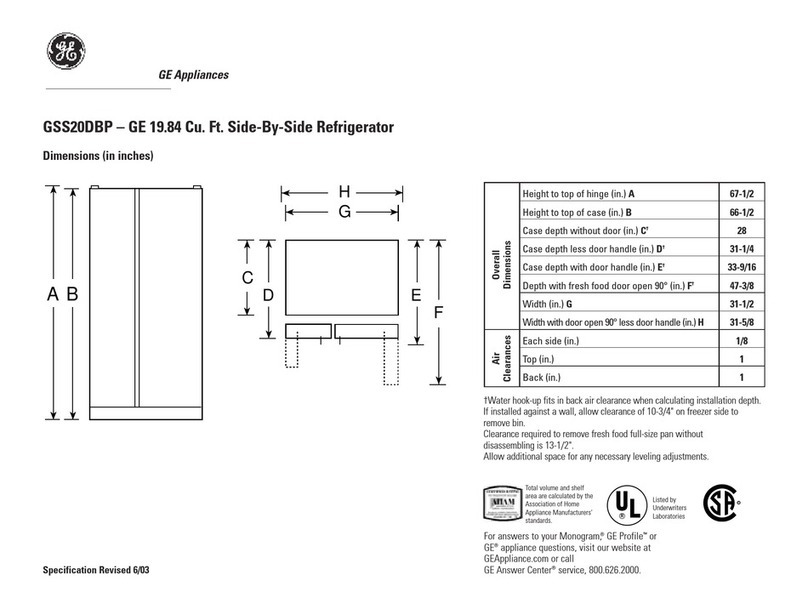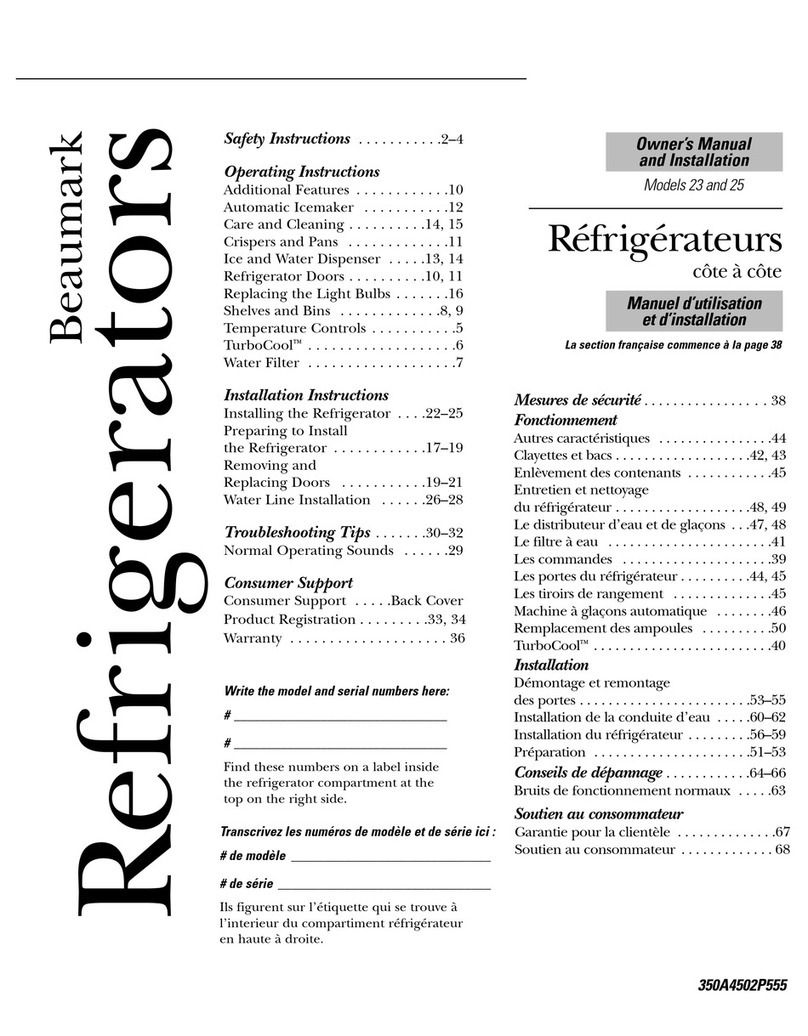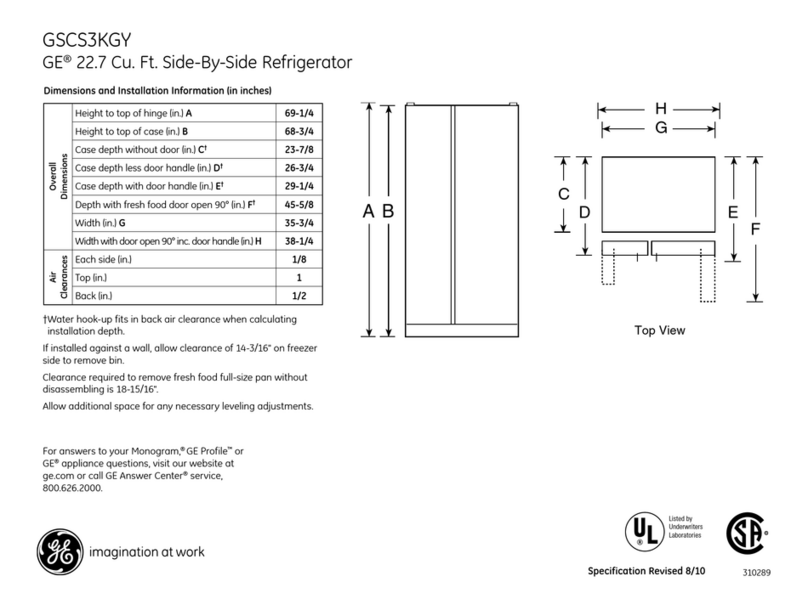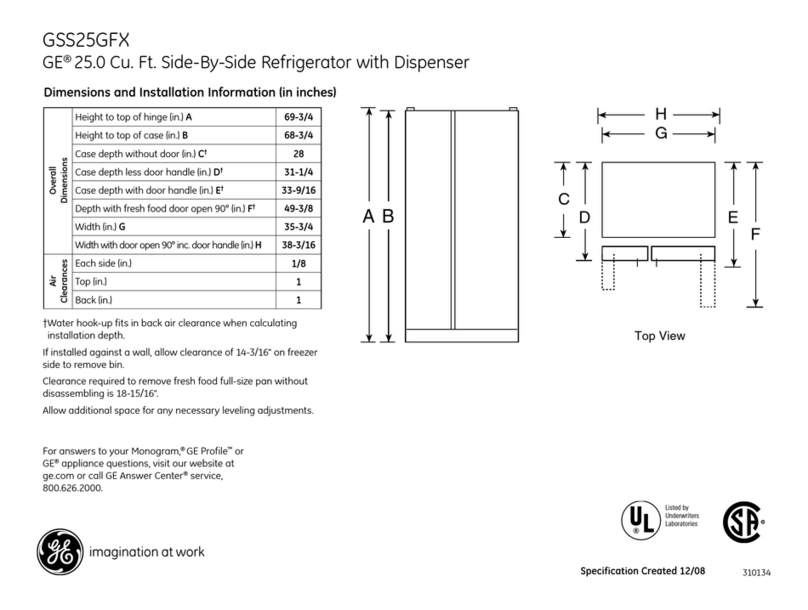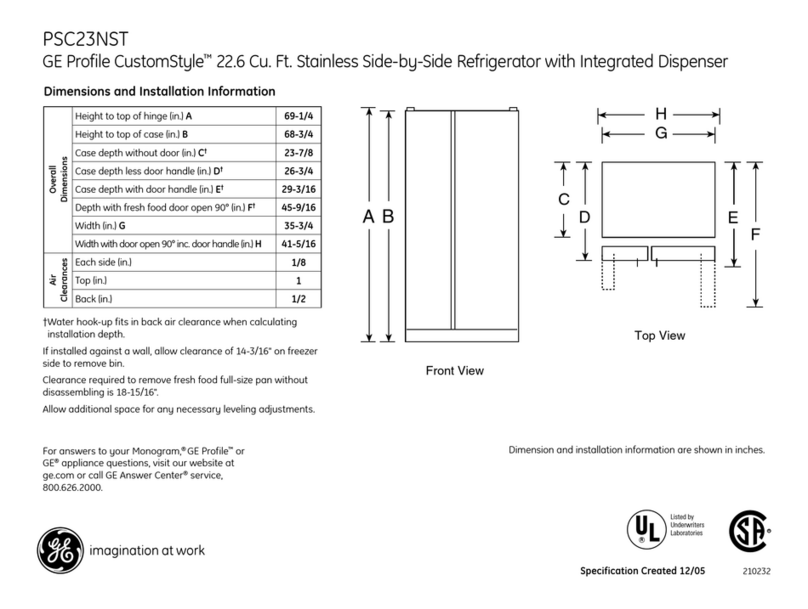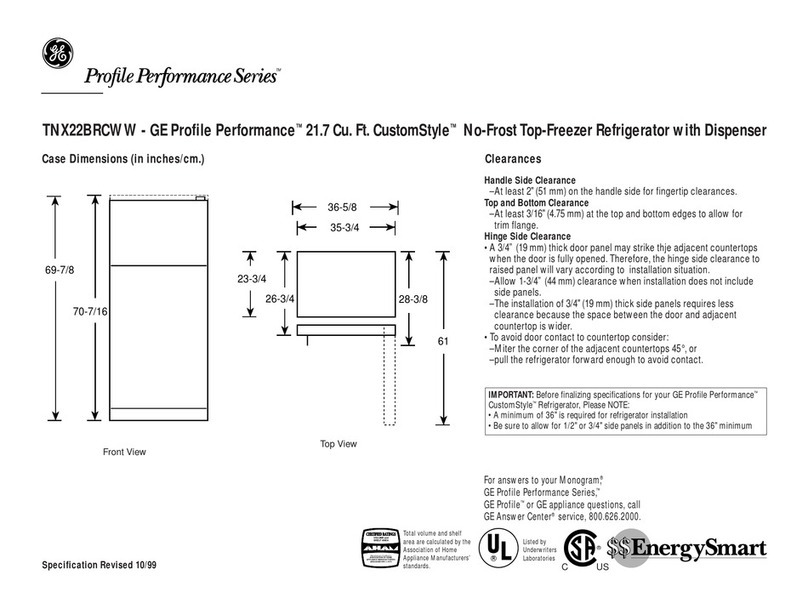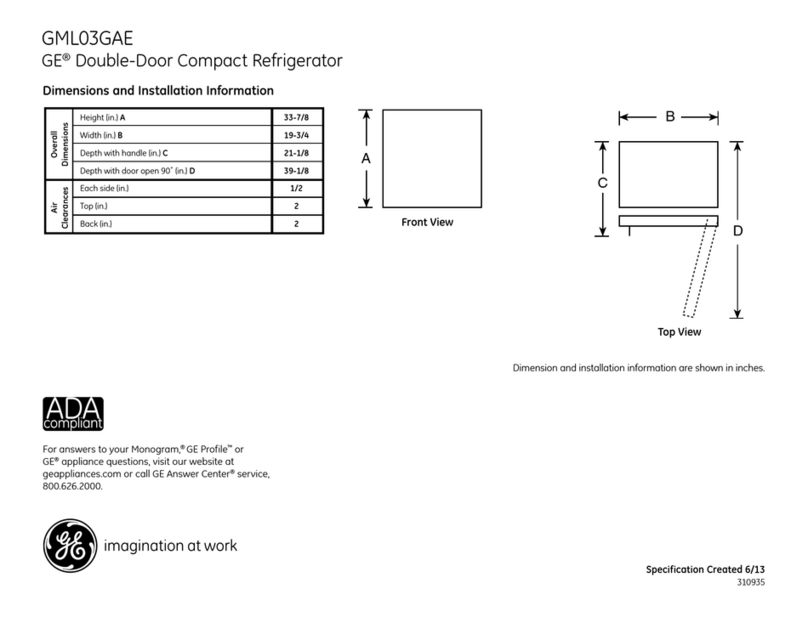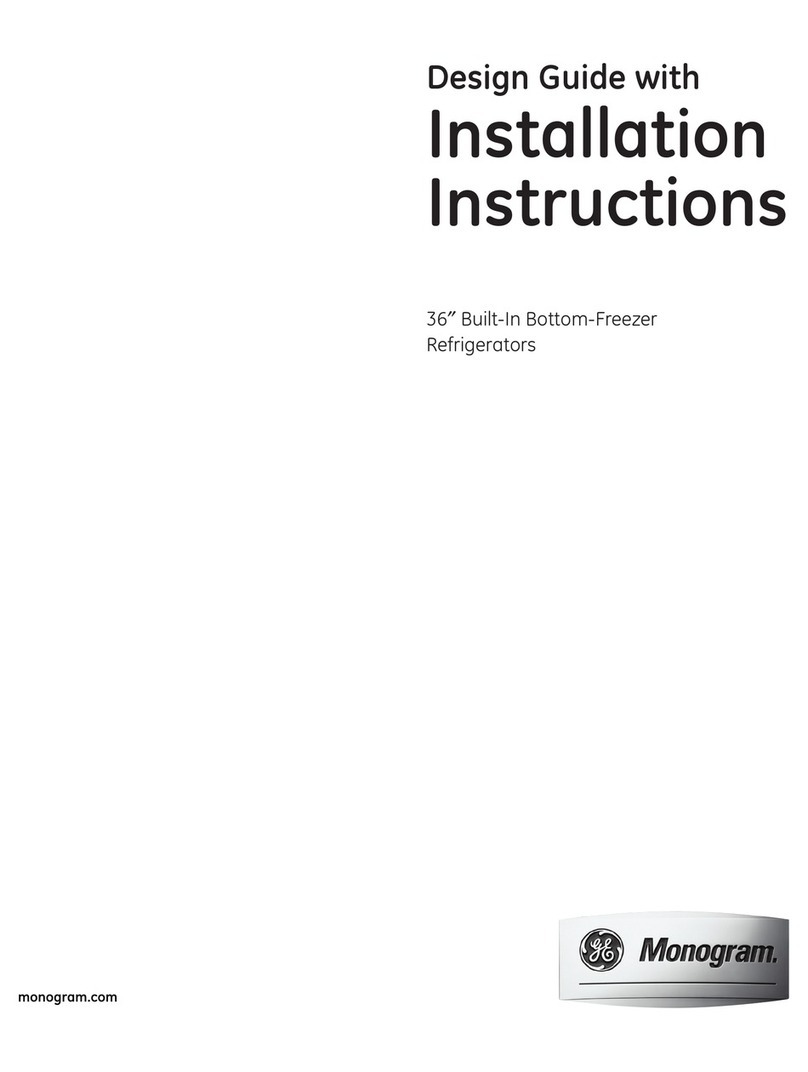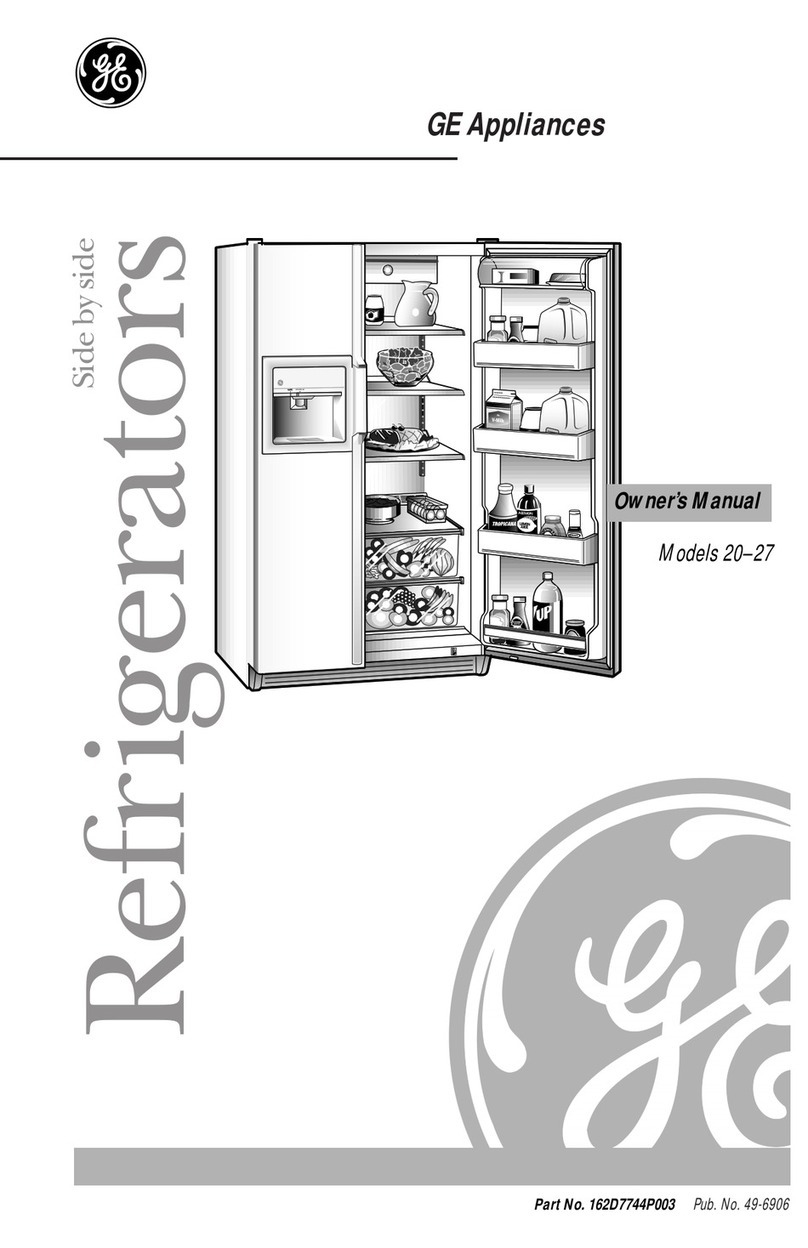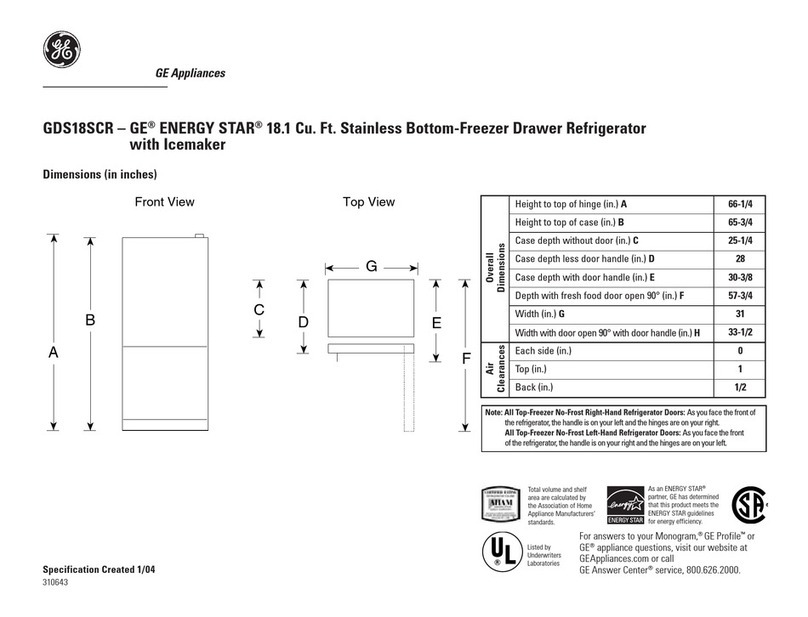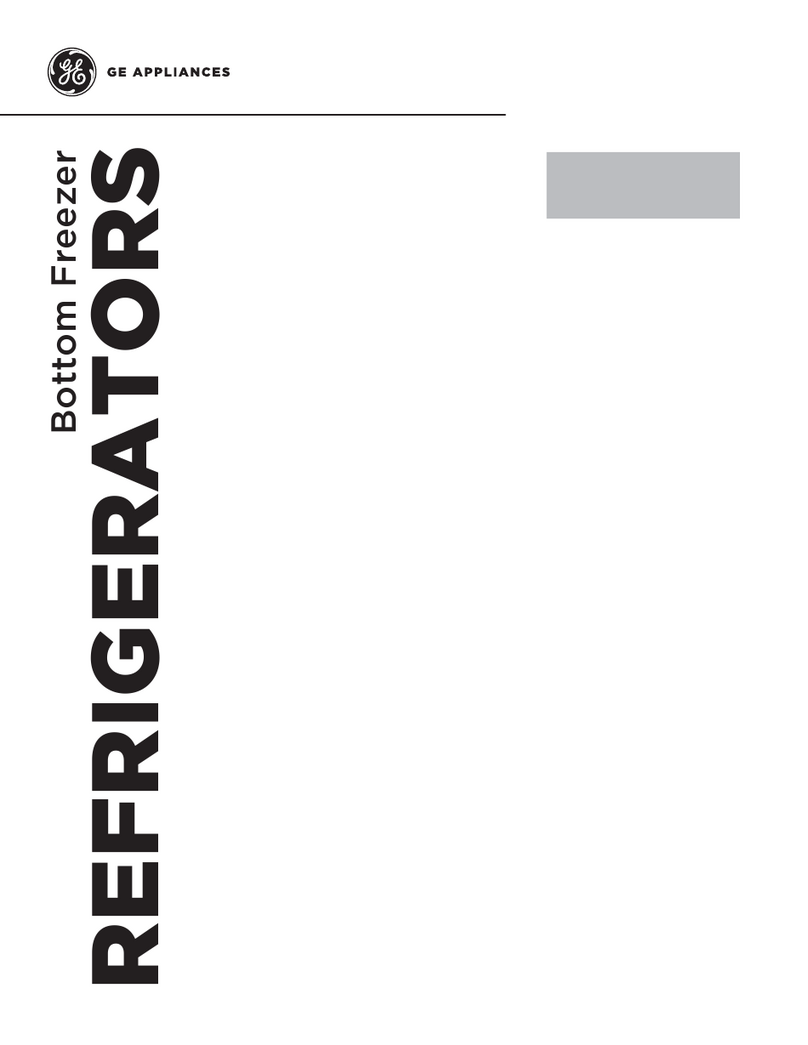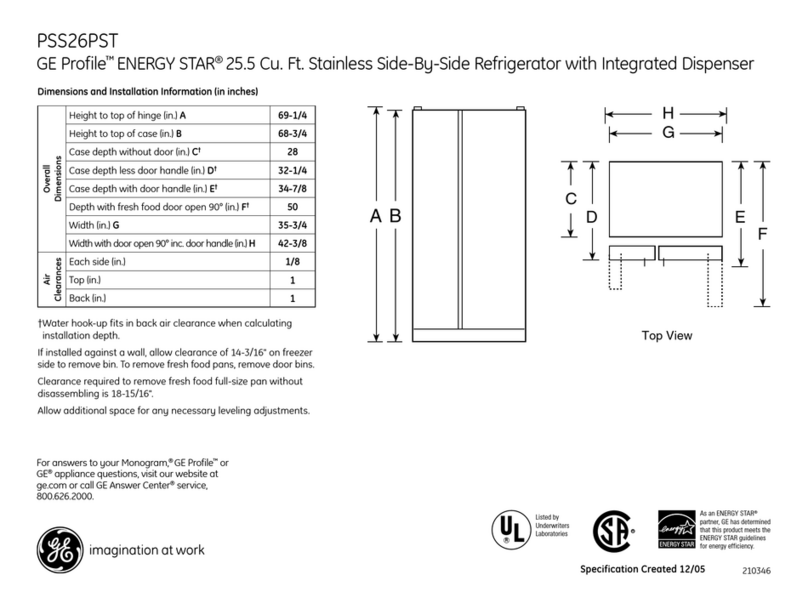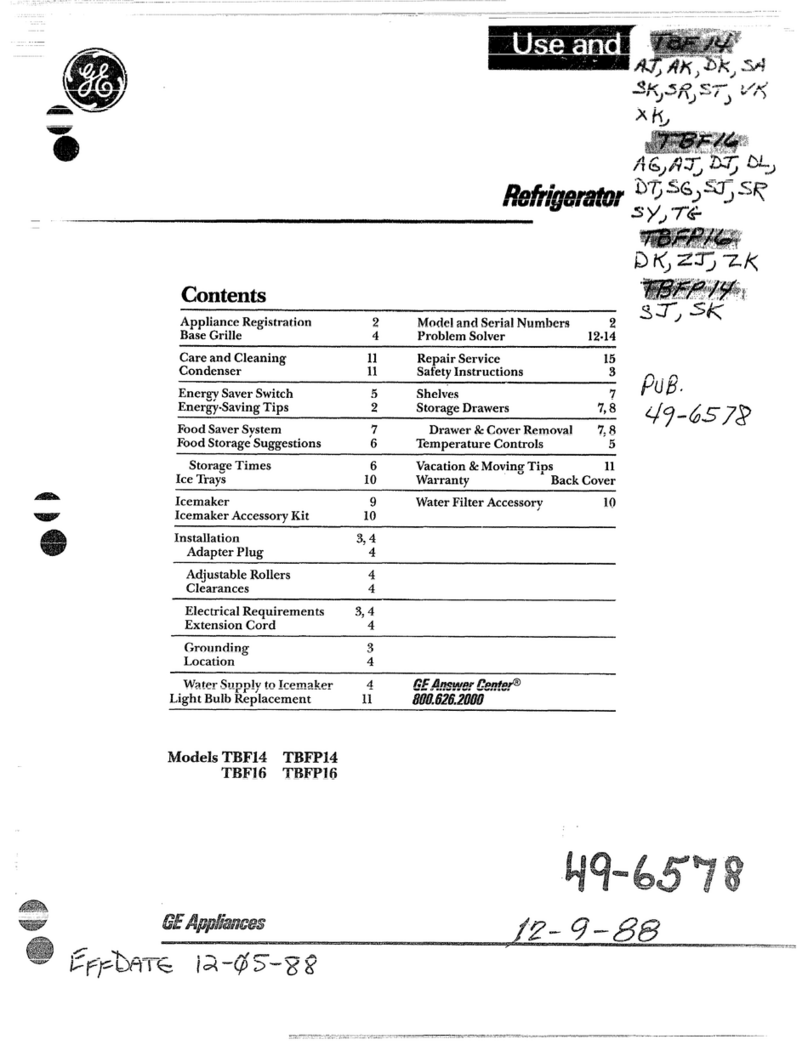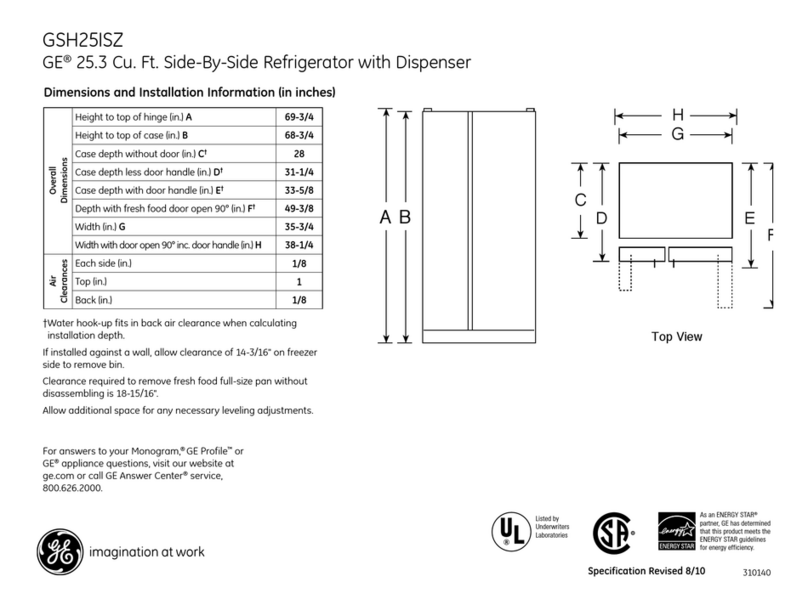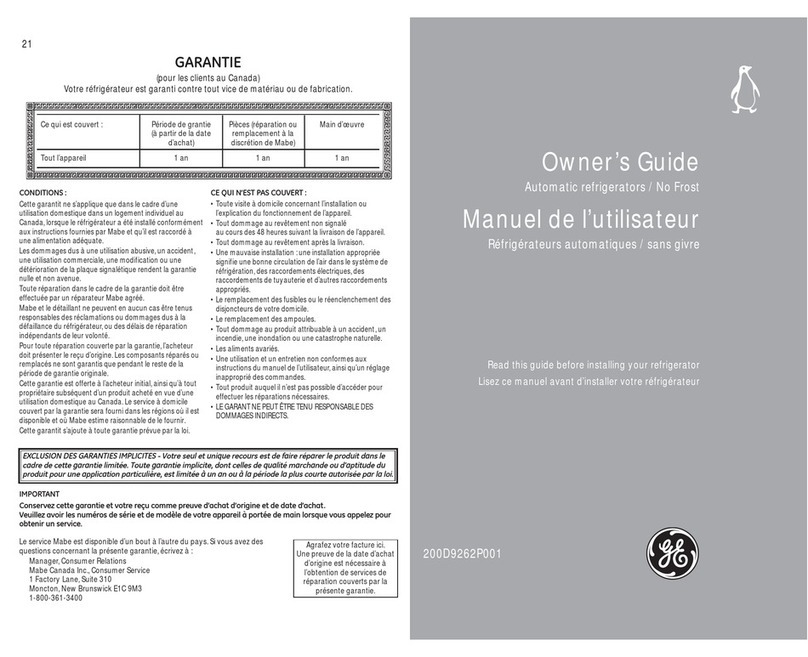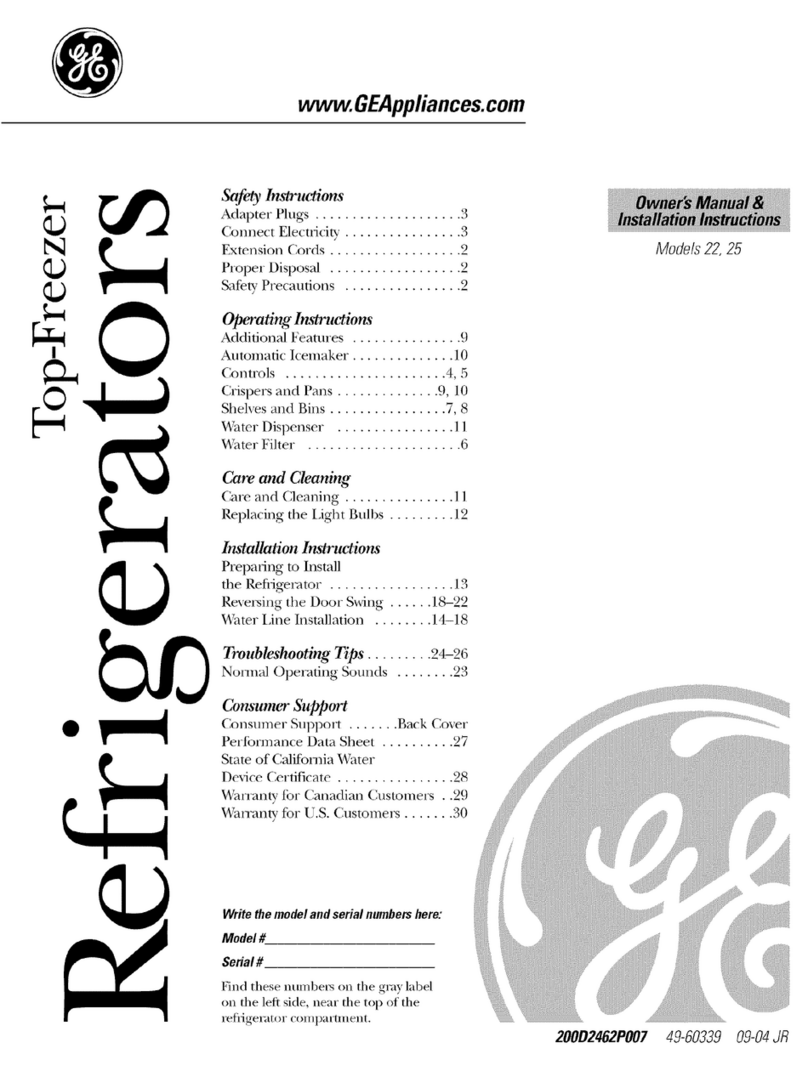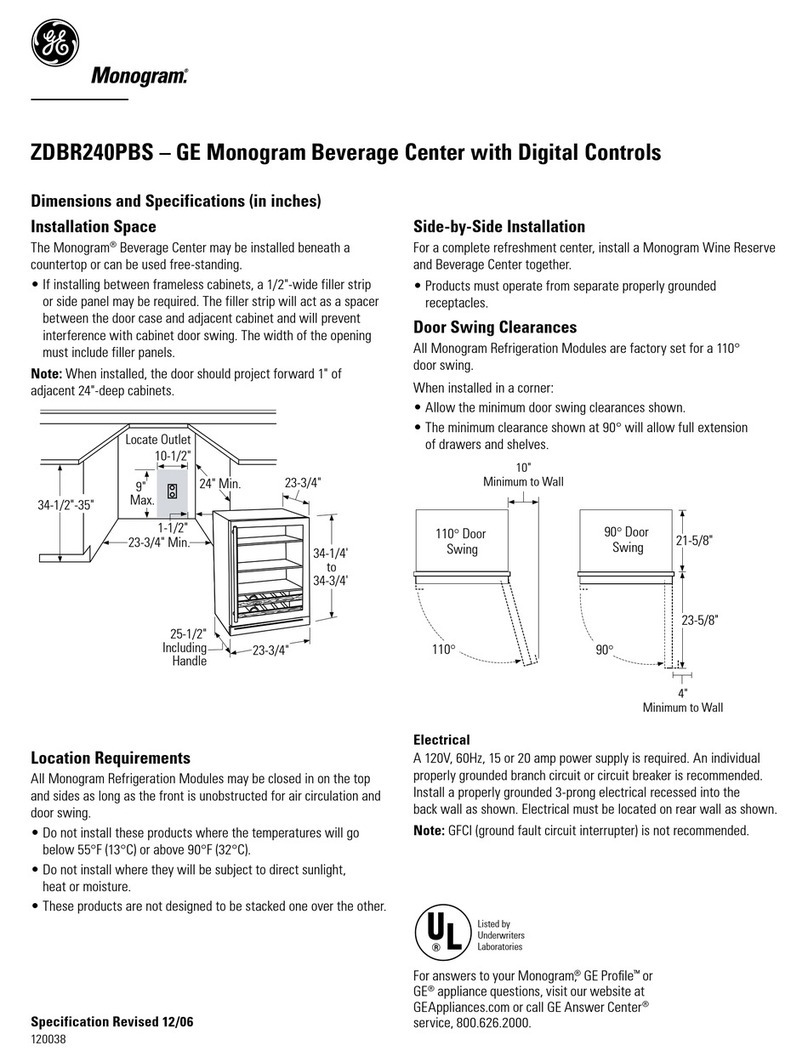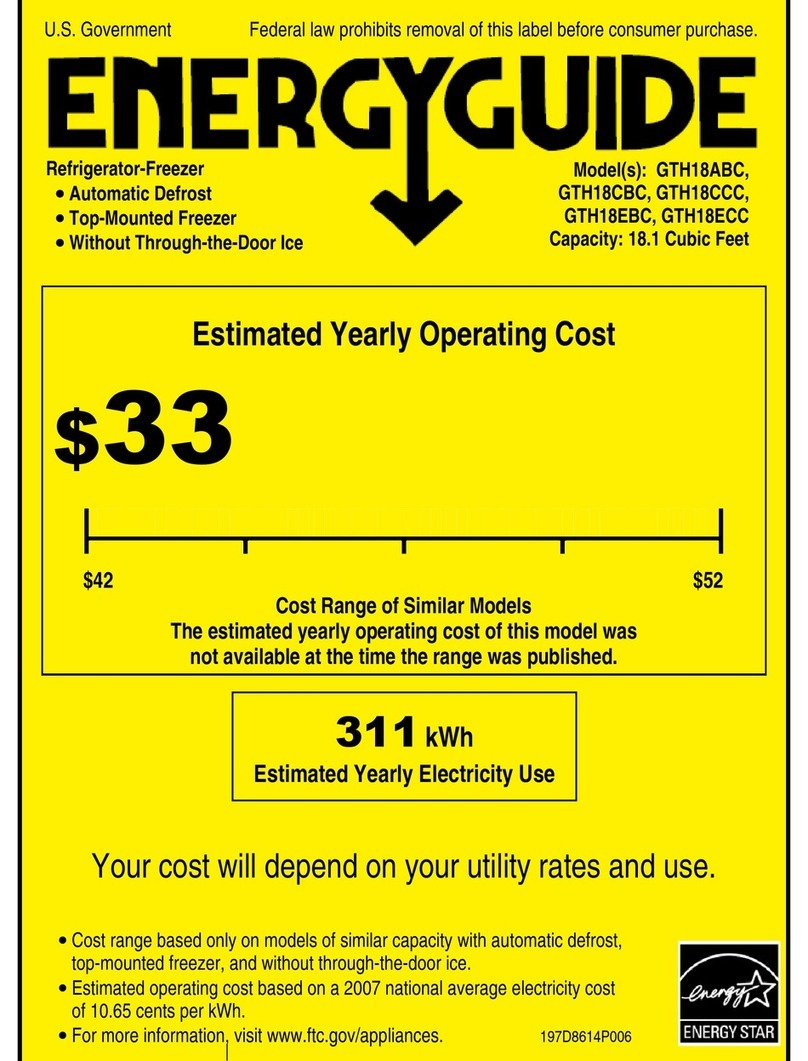IMPORTANT SAFETY INFORMATION.
READ ALL INSTRUCTIONS BEFORE USING.
WARNING!
Use this appliance only for its intended purpose as described in this Owner’s Manual.
SAFETY PRECAUTIONS
When using electrical appliances, basic safety precautions should be followed, including the following:
■
■This refrigerator must be properly installed
and located in accordance with the Installation
Instructions before it is used.
■
■Do not attempt to stand on top of the refrigerator.
Doing so may result in bodily injury or damage to
the refrigerator.
■
■Do not allow children to play with the refrigerator
or tamper with the controls.
■
■Installation of the icemaker must be done by
a qualified service technician.
■
■Do not allow children to climb, stand or hang
on the shelves in the refrigerator. They could damage
the refrigerator and seriously injure themselves.
■
■Do not touch the cold surfaces in the freezer
compartment when hands are damp or wet.
Skin may stick to these extremely cold surfaces.
■
■Do not store or use gasoline or other flammable
vapors and liquids in the vicinity of this or any other
appliance.
■
■Keep fingers out of the “pinch point” areas;
clearances between the doors and between the doors
and cabinet are necessarily small. Be careful closing
doors when children are in the area.
■
■In refrigerators with automatic icemakers,
avoid contact with the moving parts of the ejector
mechanism, or with the heating element that releases
the cubes. Do not place fingers or hands on the
automatic icemaking mechanism while the
refrigerator is plugged in.
■
■Unplug the refrigerator before cleaning and making
repairs.
NOTE: Any servicing should be performed by a qualified
individual.
■
■Before replacing a burned-out light bulb, the refrigerator
should be unplugged in order to avoid contact with a
live wire filament. (A burned-out light bulb may
break when being replaced.)
■
■To ensure stability of the product, an anti-tip bracket
is required for some models. Please refer to page 18,
Installing the Anti-Tip Floor Bracket.
■
■Setting either or both controls to 0 (off) does not
remove power to the light circuit.
■
■Do not refreeze frozen foods which have thawed
completely.
PROPER DISPOSAL OF THE REFRIGERATOR
Child entrapment and suffocation are not problems
of the past. Junked or abandoned refrigerators are still
dangerous…even if they will sit for “just a few days.”
If you are getting rid of your old refrigerator, please
follow the instructions below to help prevent accidents.
Before You Throw Away Your Old Refrigerator
or Freezer:
■Take off the doors.
■Leave the shelves in place so that children may not
easily climb inside.
Refrigerants
All refrigeration products contain refrigerants,
which under federal law must be removed prior to
product disposal. If you are getting rid of an old
refrigeration product, check with the company
handling the disposal about what to do.
DANGER! RISK OF CHILD ENTRAPMENT
2
USE OF EXTENSION CORDS
Because of potential safety hazards under certain conditions, we strongly recommend against
the use of an extension cord.
